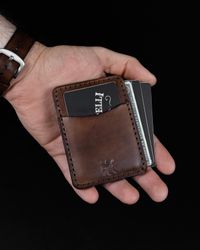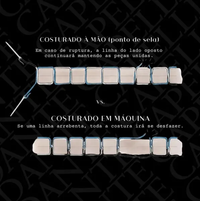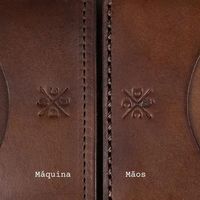
HAND SEWING
WHY OUR LEATHER PRODUCTS ARE HAND-STITCHED
Although it takes more time, hand stitching is much stronger and more durable than machine stitching. In addition to using thicker thread for hand stitching, each hole consists of two strong and independent stitches (unlike machine stitching, which will completely unravel if the thread breaks). Not to mention, hand stitching has a visibly superior and more beautiful finish. DANTE Capelli is committed to quality, not quantity. That’s why we continue to hand-stitch our wallets and bracelets the old-fashioned way.
Before the Industrial Revolution and before sewing machines, all leather goods were made by craftsmen. The hand sewing technique used by craftsmen is called saddle stitching (or saddle stitch).
What is saddle stitching?
Saddle stitching is done by hand with two needles and a thread, creating two rows of stitching in a single row of holes. To create each stitch, the thread snakes through the layers of leather twice.
Hand stitching sacrifices speed for quality. It's time-consuming, and that's part of its charm.
Every time you hold a piece of hand-stitched leather, you are witnessing something from the person who made it. However, it's about more than just holding onto traditions. There are tangible benefits to hand-stitching leather—and also aesthetic ones.
This is exactly why we continue to hand-stitch our products.
All these elements—the techniques, the materials, and of course, the craftsman's skill—work together to provide superior stitching.
Sewing Machine
For machine-stitched lock stitches, 2 spools are used. A sewing machine passes a small loop of thread through the top of the leather, which interlocks with the thread from the bottom of the leather.
While the use of sewing machines is much faster and cheaper, a great point of stress is created where the upper thread interlocks with the lower thread. This is where a machine-stitched wallet lasts much less. These 2 small threads are constantly trying to cut each other.
Machine-stitched leather is not 100% bad. Or at least, it doesn’t have to be. In fact, machine stitching has a big advantage over hand stitching: speed.
It all comes down to the compromises each company is willing to make in the production of its products. With machine stitching, the company is almost always choosing to sacrifice some form of quality for speed.
When the number of orders you can fulfill is limited by the number of available hands, you choose a faster method or, like us, hire more hands.
Machines will be able to perform certain repetitive tasks faster than anyone. If your main concern is quality, however, then what matters isn’t so much how fast the stitching is done, but how it is done.
Difference in STRENGTH between hand stitching and machine stitching
Hand stitching (saddle stitch) provides the greatest strength and security when it comes to stitching materials together.
Imagine a thread stitched with blue and white thread, one on each side. Because of how saddle stitching works, you would see the colors alternating along both sides of the leather (blue, white, blue, white, etc.). This is where durability comes in. Even if one of these threads were to break, the remaining thread would continue to hold.
Meanwhile, machine stitching doesn’t have this kind of “backup.” Instead of alternating colors like the saddle stitch, you would see one side blue and the other side white.

This may seem safe at first glance, but wait — suppose one of these threads breaks. What will happen?
The first thing is that those small loops adjacent to the break point will start to unravel. Remember, there’s no backup thread here like with the saddle stitch. Once one loop breaks, it's just a matter of time before the whole thing starts to fall apart.
Appearance of Hand-Stitched Leather vs Machine-Stitched Leather
This might seem obvious, but part of the appeal of hand-stitched leather is that it was made by a real person.
Of course, sewing machines are also operated by real people, and I wouldn't deny their skill, but the rhythms of the work and the care that goes into it are very different.
While the machine foot “stamps” the leather surface, the craftsman takes great care with each stitch, responding to the subtle variations in the leather. It's almost a meditative act in a world that no longer values such things.
And the results speak for themselves.
It would be hard to find someone who would argue that machine stitching has more aesthetic appeal than a high-quality stitch made by a skilled artisan.

Hand-stitched leather has something that machine-stitched leather simply doesn't have: Personality.
The character of a hand-stitched piece of leather comes from the craftsman who stitches stitch by stitch, creating an appealing overlap between the threads. In fact, it’s one of the things that distinguishes hand stitching.
A hand-stitched edge is a functional work of art.
It doesn’t simply convey function. It also speaks to the skill of a craftsman who worked hard through thousands and thousands of stitches to perfect a specific skill.
We don’t take shortcuts when it comes to quality. We want every piece that leaves our workshop to be a testament that craftsmanship is alive and well. While the rest of the world insists on “faster” and “cheaper,” we think in terms of “better” and “stronger.”
Every choice we make is done with the intention of producing the best work possible. This includes our decision to hand stitch, our choice of thread, and the belief that newer doesn’t always mean better.
You can do good work with machine stitching. The best work, however, requires something more patient — more deliberate.
